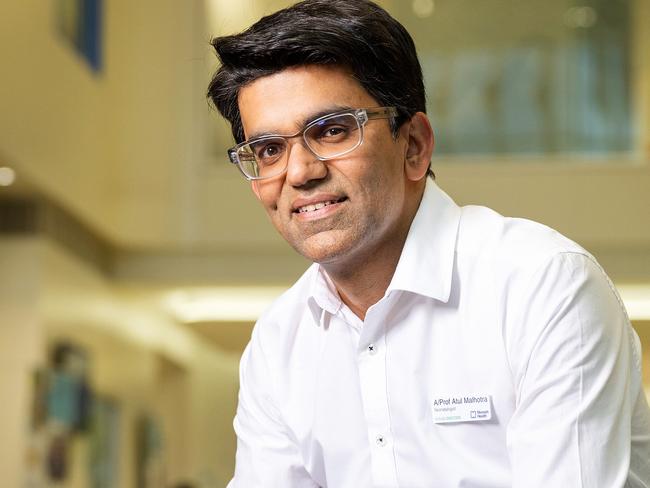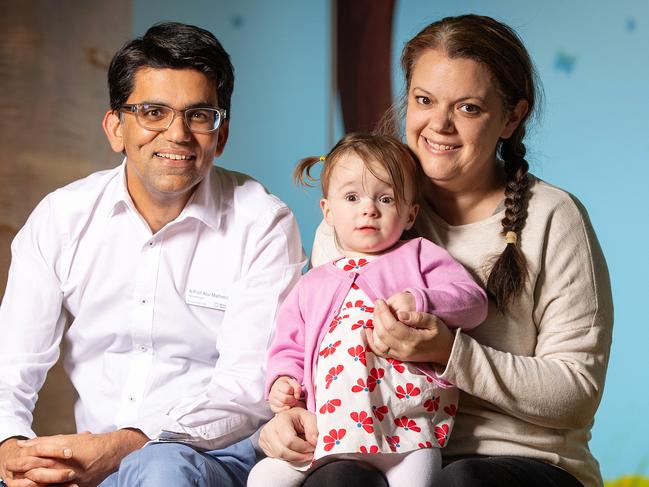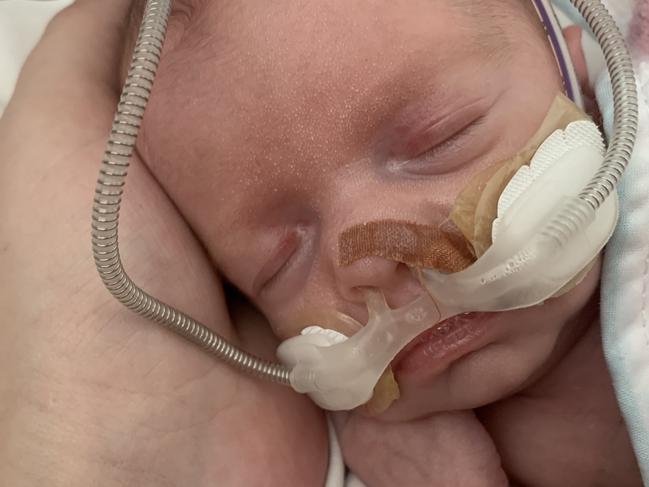Monash Children’s find early intervention key to cerebral palsy
It was thought treating children with a common physical disability couldn’t start until they were toddlers. Now new Victorian research shows the earlier, the better.

Victoria
Don't miss out on the headlines from Victoria. Followed categories will be added to My News.
A major study of vulnerable Victorian babies shows it is possible to accurately predict those likely to develop cerebral palsy years earlier than previously thought.
Cerebral palsy (CP) is the most common physical disability in children and is often the result of a brain injury caused by either a traumatic or complicated birth, low birth weight or extreme prematurity.
Experts had thought the debilitating disease could not be diagnosed, or treated, until around the age of two years.
Now Victorian researchers say babies as young as three months can be diagnosed and with earlier interventions such as physiotherapy, occupational therapy and speech therapy, it may help “rewire” their brain.

Senior author Associate Professor Atul Malhotra says the team confirmed with “high accuracy” that CP can be diagnosed much earlier and also to predict its severity.
The Head of the Early Neurodevelopment Clinic at Monash Children’s Hospital, he says early intervention is key to improving outcomes for the 700 babies who are diagnosed with CP every year in Australia.
The study, published in the journal JAMA Network Open, found that early neurodevelopmental assessments at three to four months predicted all the cases of moderate to severe cerebral palsy.

The team recruited 118 babies through Monash Children’s Hospital who were at risk of developing CP and followed them over two years to confirm the assessment.
The study was led by Monash Children’s Hospital in partnership with Monash University and the Hudson Institute of Medical Research.
“We were one of the first hospitals in the world to adopt these international guidelines led by the Cerebral Palsy Alliance, which suggested that when we do early assessments on these babies we can predict or actually diagnose cerebral palsy at a very early age,” Prof Malhotra said.
“It means that intervention can start at much earlier age compared to what is currently done.”

One of the babies assessed by the Early Neurodevelopment Clinic team was Maisie who was born 10 weeks early in 2022 weighing a fragile 978g.
Parents Amanda and Shaun, who asked not to share their surname, were told she was high risk for CP.
Today Maisie is an energetic two-year-old who has started to walk and loves to climb, something Amanda says may not have been achieved without the early intervention of physiotherapists at Monash Children’s.
“Truth be told, the best intervention is early intervention,” Amanda said. “Whether it be news you don’t want to hear, mitigating the issues earlier makes it easier long term and I am so grateful the team persisted with us.”
Amanda said the head of pediatric physiotherapy at Monash Children’s had started working with Maisie in the early days after her birth.

“It looked like she was playing with her, but she would sit there and video Maisie to watch her movements and how she would interact if she tickled her tummy; she was assessing that involuntary movement and also getting her tiny legs and arms moving.”
Amanda said after Maisie left hospital the family followed the daily exercise routine they were taught.
“Maisie has just turned two and I don’t know if she would be walking without it,” Amanda said. “She is head and shoulders above where she would have been.”
Prof Malhotra said there were two cohorts in the study: babies born prematurely or of low birth weight and babies who had traumatic or complicated births which put them at a higher risk of CP or other neurodevelopmental impairments.
He said it was the first study to do the assessments in a “real world” setting.
“These babies with brain injury have neuroplasticity (the ability to re-wire or reorganise the brain) in the first few months of life which early intervention therapies harness,” Prof Malhotra said. “We are seeing that most of the infants have better functional outcomes at two years as a result.”

The team now hopes all hospitals caring for high-risk newborns nationally adopt the early assessments as routine, saying it offered the potential to influence the progression of the disease.
“Obviously the earlier these babies get access to services, it is better,” Prof Malhotra said. “We are not doing anything extra for the babies, we are just getting the services to them earlier.”
He said the research emphasised the crucial role of integrating early assessments into routine clinical practice.
“It can be difficult for families to identify the subtle early features of cerebral palsy or other cognitive or neurodevelopmental impairment in the first few months of an infant’s life.” Prof Malhotra said.
“Without early neurodevelopmental assessments, signs are often not noticed until developmental milestones are not being reached as babies get older. By then, interventions are likely to be less effective.”
More Coverage
Originally published as Monash Children’s find early intervention key to cerebral palsy




